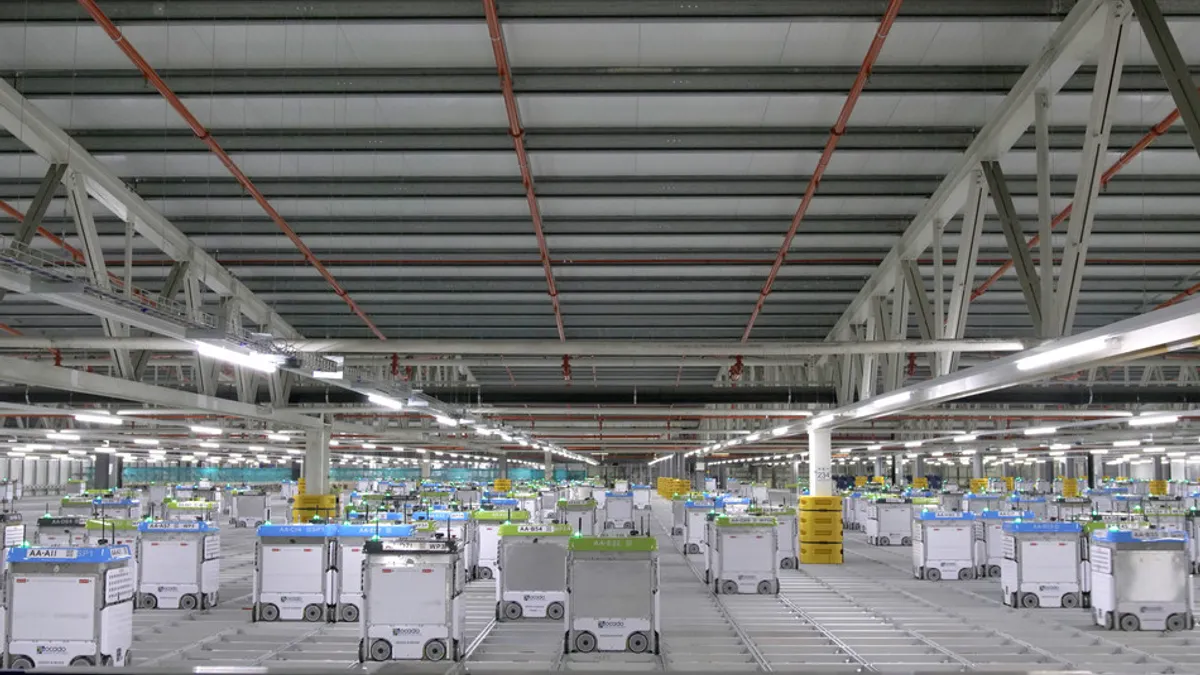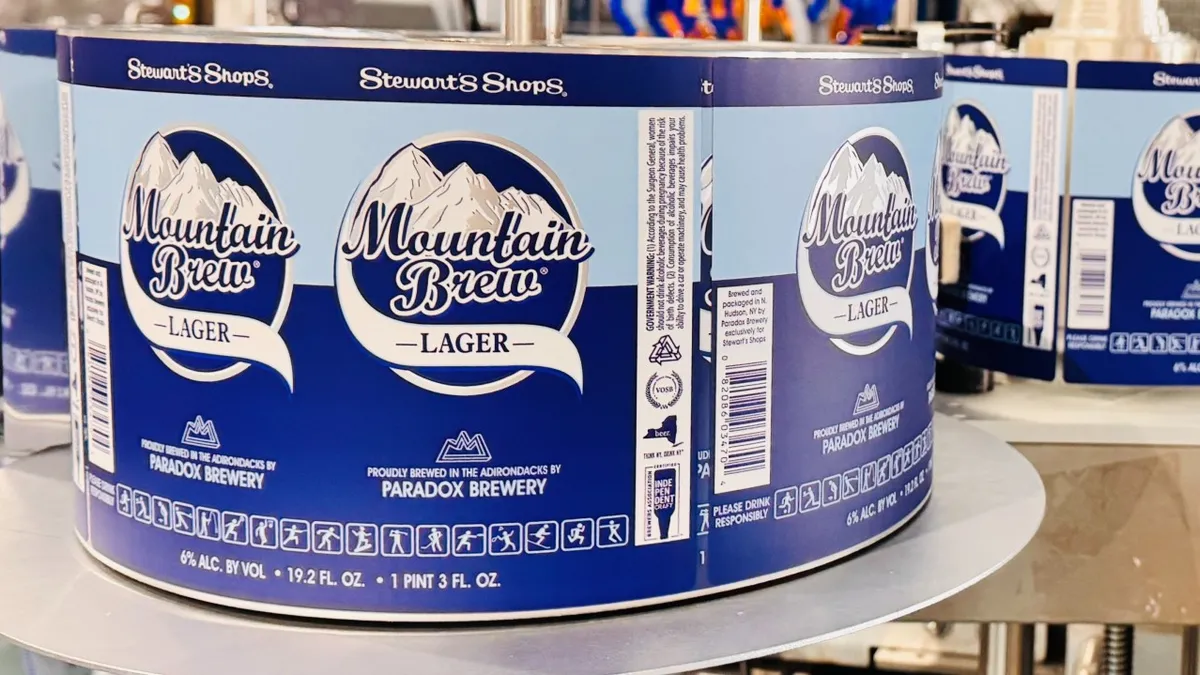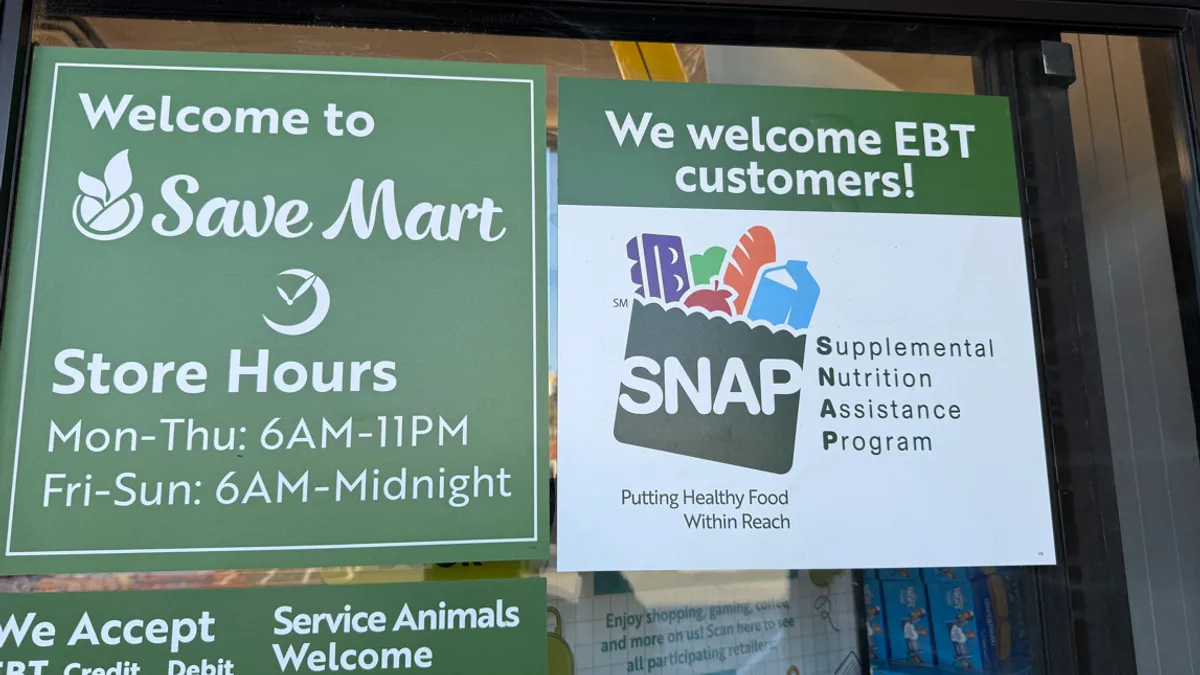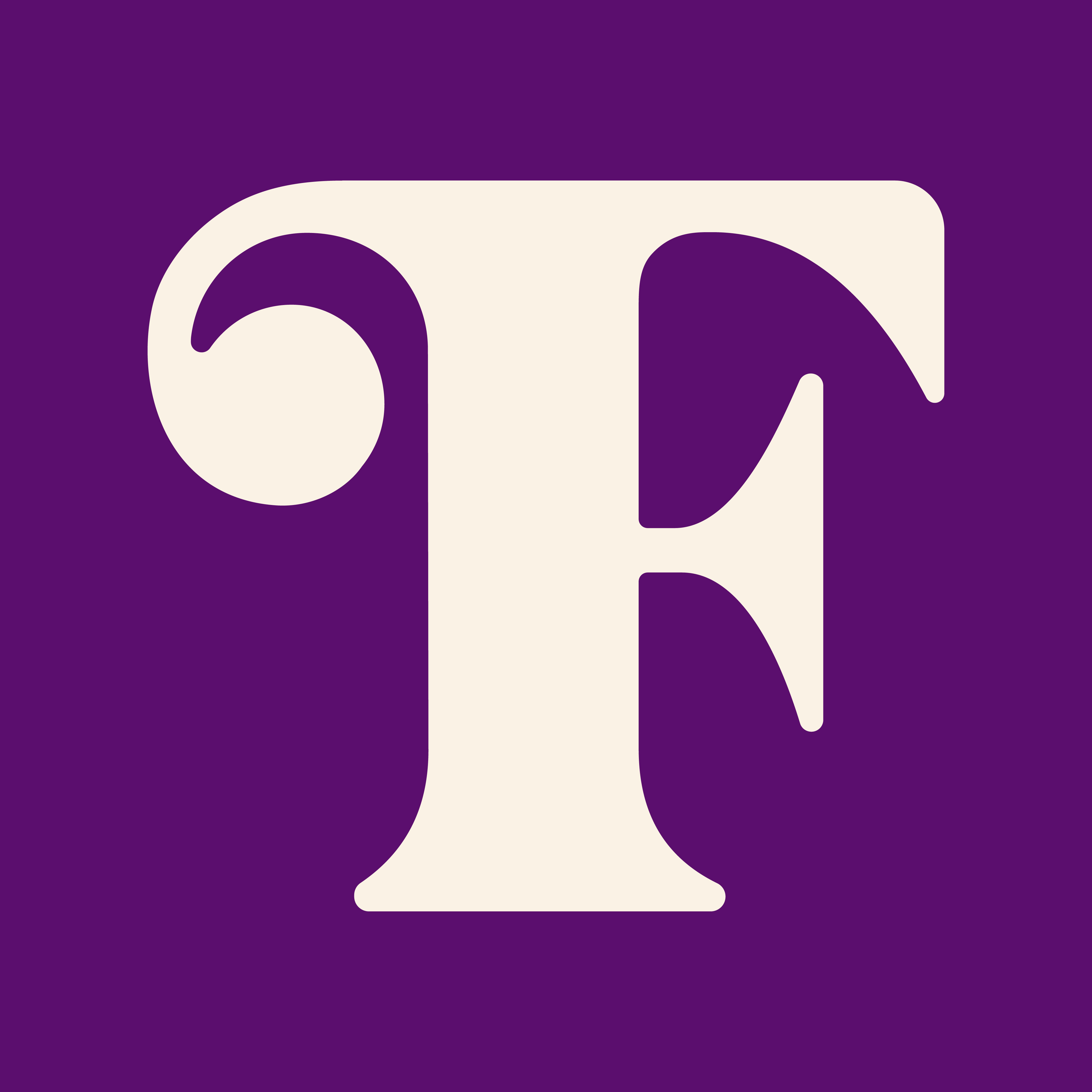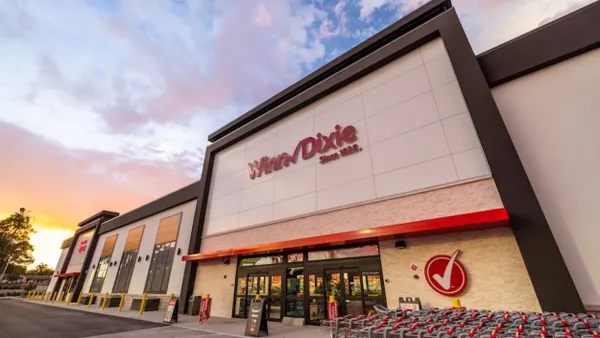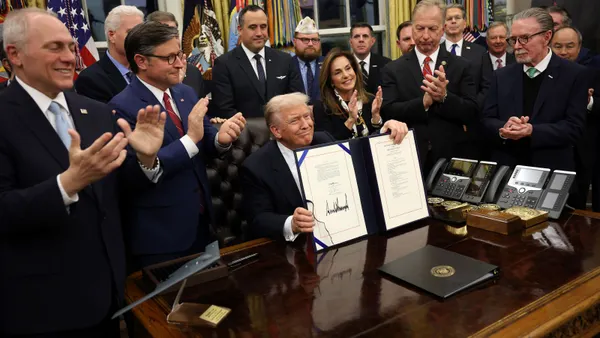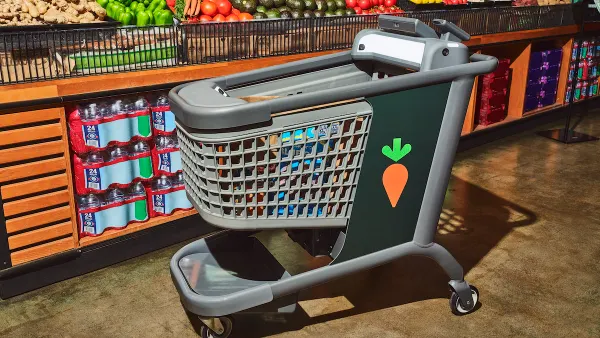Dive Brief:
- Kroger is looking to improve its e-commerce profitability by approximately $400 million in 2026 through a number of key changes, the company announced Tuesday.
- The grocer plans to close three of its automated fulfillment centers in January, lean further into in-store fulfillment and expand ties with its third-party e-commerce partners. It will incur impairment and related charges of $2.6 billion in fiscal Q3 of this year as a result of these changes.
- This announcement comes months after the company initiated a “full site-by-site analysis” of its automated order-fulfillment network in an effort to improve digital profitability.
Dive Insight:
Nearly every quarter since early 2022, Kroger has reported year-over-year digital sales increases that have surpassed its same-store sales growth. Despite this, the company’s e-commerce business remains unprofitable, something interim CEO Ron Sargent pledged earlier this year to address.
After a “comprehensive review,” Kroger has decided to shutter fulfillment facilities located in Pleasant Prairie, Wisconsin; Frederick, Maryland; and Groveland, Florida, in January. All three fulfillment facilities are automated fulfillment centers, or CFCs. The Groveland CFC opened in June 2021, followed by the Pleasant Prairie facility in June 2022 and the Frederick center in June 2023.
Kroger plans to continue monitoring the performance of the remaining CFCs, noting that in markets where it sees a higher density of demand, it will continue to leverage them to “increase customer engagement, capacity and improve productivity and profitability,” according to the announcement.
Kroger’s automated fulfillment network was developed in partnership with U.K.-based automation specialty Ocado. The partnership launched in 2018, but the companies paused the rollout of new facilities in 2023. At the start of this year, Ocado said it plans to open two customer fulfillment centers with Kroger — one in Charlotte, North Carolina, and another in Phoenix — in fiscal 2026.
As it pulls back on dedicated e-commerce facilities, Kroger will ramp up in-store fulfillment, with plans to pilot “capital-light, store-based automation in high-volume markets,” according to Tuesday’s announcement. The company stated that its CFC network, combined with more store-based fulfillment, will improve its e-commerce profitability.
Kroger has also started deepening its partnerships with third-party e-commerce providers. Earlier this month, Instacart announced Kroger would be one of the first grocers to pilot the grocery technology company’s new artificial intelligence technology, which lets shoppers build baskets by conversing with an AI-powered online agent. This feature will be available within Kroger’s mobile app. Kroger added in its Tuesday announcement that it made Instacart its primary delivery fulfillment provider across its app and website.
In late September, Kroger also expanded its ties with DoorDash, offering delivery services in conjunction with the e-commerce provider from nearly 2,700 of its stores. Late last month, Kroger said it would expand its partnership with Uber starting in early 2026.
“eCommerce remains a core part of serving customers who want better value, wide selection and flexible ways to shop,” Sargent said in a statement. “We are building on a strong foundation with five consecutive quarters of double-digit eCommerce sales growth and increased profitability improvements. We are taking decisive action to make shopping easier, offer faster delivery times, provide more options to our customers, and we expect to deliver profitable sales growth as a result.”
During its most recent earnings call, Kroger reported that e-commerce sales increased 16%, leading its sales growth among divisions in Q2 along with pharmacy and its fresh department.


